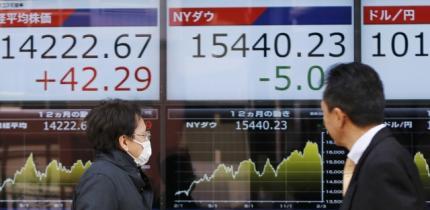Asian currencies mostly steady amid China slowdown and U.S.
Tapering and expectations that U.S. interest rates will start to climb from the second half of 2015

Tapering and expectations that U.S. interest rates will start to climb from the second half of 2015
Reuters - Emerging Asian currencies are expected to mostly hold steady in the coming year as the global economic recovery gathers pace and the outlook for risk improves, but a slowdown in China remains a key concern, a Reuters poll showed.
After deep losses in 2013, most developing market currencies have gained so far this year, suggesting less anxiety about the Federal Reserve's stimulus-tapering and stronger global growth expectations.
Still, most currencies are either expected to hold steady or remain soft over the course of the coming year while the Chinese yuan will likely recoup after a rare weak spell.
Promo Terbaru di Bareksa
Beijing engineered a steep depreciation in the yuan in February and March to strike at speculators betting on one-way appreciation. Market confidence in long-term financial reforms, however, will continue to attract capital inflows and add to upward pressure on the Chinese currency.
Thursday's poll of more than 50 foreign exchange analysts showed the People's Bank of China (PBOC) may let the yuan firm to 6.20 in a month against the dollar, 6.05 in six months and appreciate to 6.00 in a year.
A slew of weaker-than-expected data out of China this year has sparked worries over the health of the world's second-largest economy and countered optimism about global growth.
"China growth factor dominates most currencies and could be a catalyst for renewed weakness in emerging markets," wrote Mark McCormick, FX strategist at CA-CIB, in a note.
A slowing Chinese economy bolsters the case for more stimulus steps and reinforces the view that yuan appreciation will be restrained to support exports. The government has unveiled targeted measures, including scrapping taxes for small firms, offering more help for ailing exporters and boosting investment in urban infrastructure and railways.
Tapering and expectations that U.S. interest rates will start to climb from the second half of 2015, could add pressure on emerging market currencies although analysts say this has been largely priced in. Only a radical change would lead to another sell-off of emerging market assets.
"There is also an emerging notion that limited room for higher-adjusting Fed monetary policy expectations is likely to keep the greenback capped from the current levels," wrote Manuel Oliveri, FX strategist at Credit Agricole, in a research note.
SOFT TO STEADY COURSE
Most vulnerable among Asia's emerging market currencies are the Indonesian rupiah and Indian rupee. The rupiah led losses last year with a fall of 21 percent against the dollar while the rupee weakened slightly more than 11 percent.
Investors are still concerned that both countries are highly dependent on foreign money to fund their large current-account deficits as growth falters.
Southeast Asia's largest economy appears to have turned a corner this year with its current-account deficit narrowing, but Indonesia is confronting weaker exports due to soft commodity prices and high consumption.
So far this year, both currencies are leading gains in the region but were seen weakening against the dollar in a year.
Indeed, the rupee's recent rally is set to reverse course as upbeat sentiment ahead of a general election wears off and economic growth remains slow.
The poll showed the rupee will likely weaken to 60.61 in one month, 61.50 in six months and 62.00 in a year, while the rupiah is expected to trade at 11,434 in one month, 11,772 in six months and 11,800 in 12 months.
The Taiwan dollar, Malaysian ringgit, Philippine peso, Thai baht and Singapore dollar - after losing against the dollar in 2013 - were expected to hold steady over the next year.
The South Korean won will likely hold steady over the next 12 months, but a weaker Japanese yen could weigh on the currency as it hampers prospects for Korean exports.
While weak currencies exacerbated import costs for regional countries during a time of tepid domestic demand, analysts now expect that to help boost exports on the back of a stronger recovery in the United States.
Pilihan Investasi di Bareksa
Klik produk untuk lihat lebih detail.
| Produk Eksklusif | Harga/Unit | 1 Bulan | 6 Bulan | YTD | 1 Tahun | 3 Tahun | 5 Tahun |
|---|---|---|---|---|---|---|---|
Trimegah Dana Tetap Syariah Kelas A | 1.382,65 | - | |||||
Trimegah Dana Obligasi Nusantara | 1.093,4 | - | |||||
STAR Stable Amanah Sukuk autodebet | 1.079,4 | - | - | ||||
Capital Fixed Income Fund | 1.844,45 | ||||||
Insight Renewable Energy Fund | 2.270,42 |

Produk Belum Tersedia
Ayo daftar Bareksa SBN sekarang untuk bertransaksi ketika periode pembelian dibuka.
